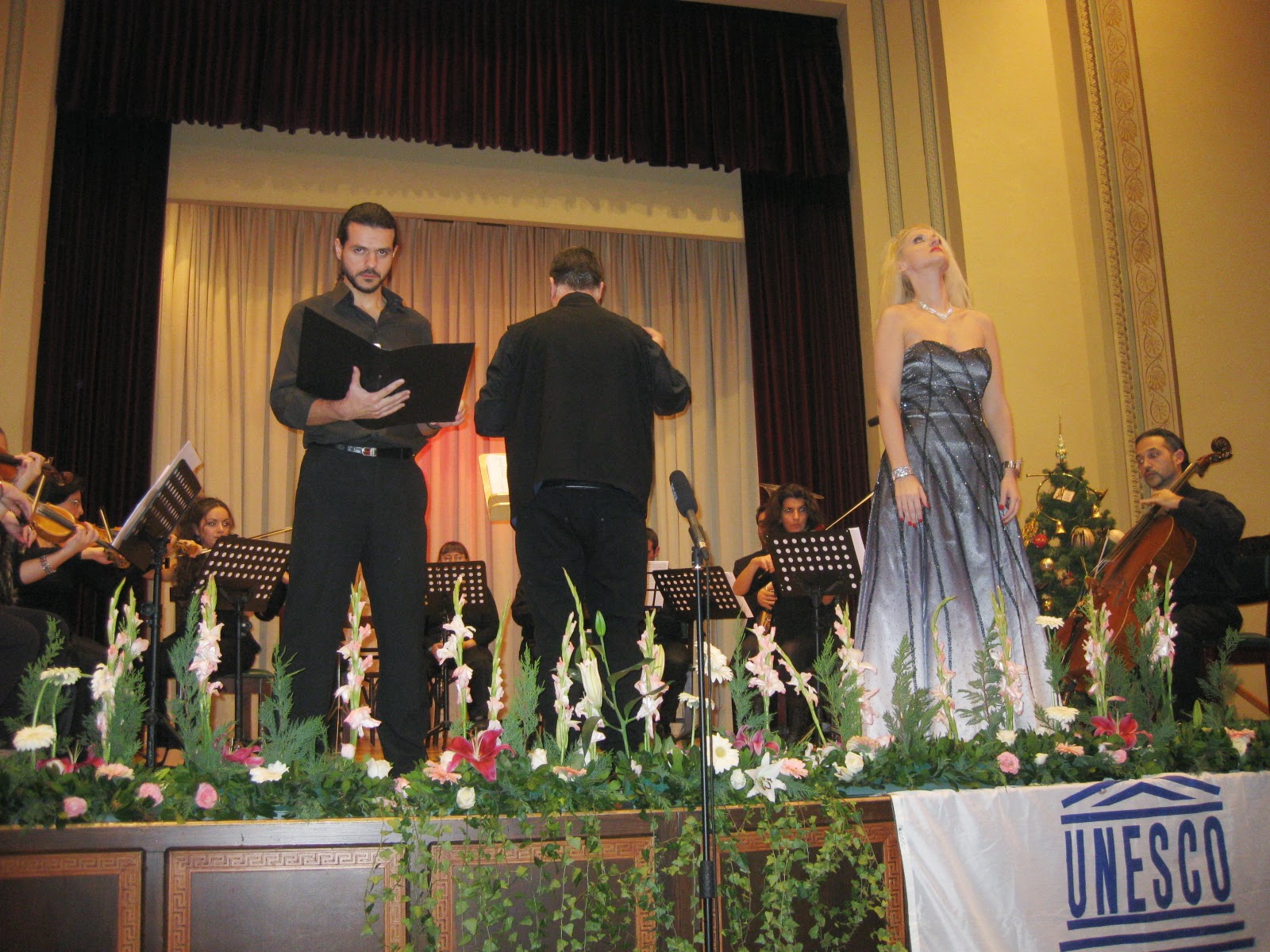 |
| Panagiotis Karousos, Mirela Ruci, Christos Papageorgiou, Efi Christodoulou, Georgia Konstantopoulou |
On
Wednesday, January 28 recorded works of Greek Canadian composer Panagiotis
Karousos at the Studio E of the Greek National Radio-television, for the Radio
Show of Christos Papageorgiou, "Lunch Time Live Concert" 13.00 -
15.00 / 90.9 FM live.
The
works will be broadcast on Wednesdays at Greek National Radio Station by the
Third Program of NERIT hosted by the Director of the Third Program Radio Show
of the pianist and composer Christos Papageorgiou.
 |
| Maria Lyberakou, Vanessa Kalkanis, Irene Konsta, Panagiotis Karousos, Eleftherios Kalkanis, Christos Papageorgiou, Anastasios Stellas |
The
Greek Orchestra directed by the famous Greek conductor of the Symphony Orchestra
of the City of Athens Eleftherios Kalkanis.
In the concert
presented works by Panagiotis Karousos with notable well known artists with
perfect interpretations.
The
program included the orchestral works Violin Concerto (Efi Christodoulou,
violin), Cello Concerto (Mirela Ruci, cello), Oboe Romance (Georgia
Konstantopoulou, oboe), and in a World Premiere the String Quartet (Brunilda
Malo, Monika Dhamo, Alketa Tzaho, Mirela Ruci).
From the
operas of Panagiotis Karousos presented excerpts from the "OLYMPIC
FLAME" with soprano Irene Konsta, and highlights from "PROMETHEUS BOUND"
with soprano Irene Konsta at the role of Io, soprano Vanessa Kalkanis at the
role of the Goddess Hera, tenor Anastasios Stellas in the role of God Hermes
and soprano Maria Lyberakou in the role of Oceanide.
Also
interpreted the aria “Divine Music” from the Oratorio "The Song of Nations"
with soprano Vanessa Kalkanis in French, (a poem of Khalil Gibran).
The
presented works characterizing the entire compositions of Panagiotis Karousos
including (Opera, Oratorio, Concerts, Chamber Music).
The Hellenic Orchestra conducted by Eleftherios Kalkanis
included some of the finest musicians as, First Violins:
Efi Christodoulou, Brunilda Malo, Monika Dhamo, Stavroula Menti, Second Violins:
Katia Kaminski, Stella Ziopoulou, Bledar Skenderi, Violas: Alketa Tzaho,
Biliana Zaharinova, Helen Lingri, Cellos: Mirela Ruci, Alexander Tsefa, Contrabass:
Dimitris Aslanidis, Flute: Reni Tsalapatis, Oboe: Georgia Konstantopoulou, Clarinets:
Thanassis Katerinakis, Panagiotis Markou. Soloists: Irene Konsta, soprano,
Vanessa Kalkanis, soprano, Maria Lyberakou, soprano, Anastasios Stellas, tenor.
The
Third Program thanked the musicians, soloists conductor and composer for the
great concert offered to THE Greek National Radio Show in NERIT.







.jpg)



